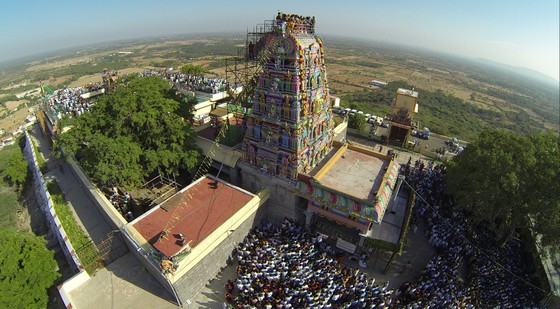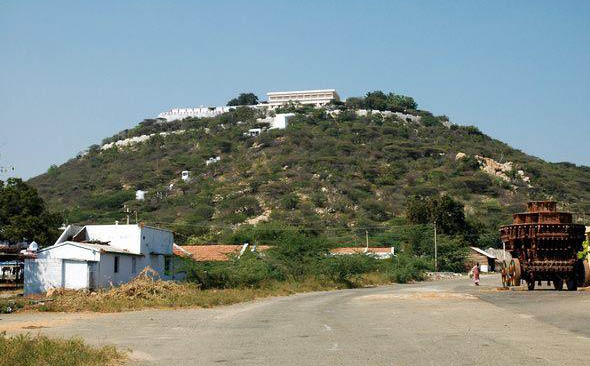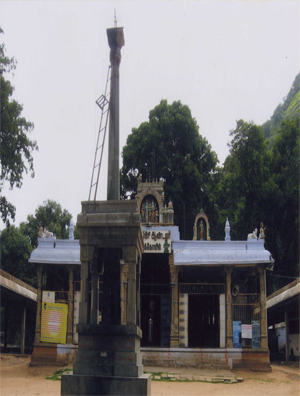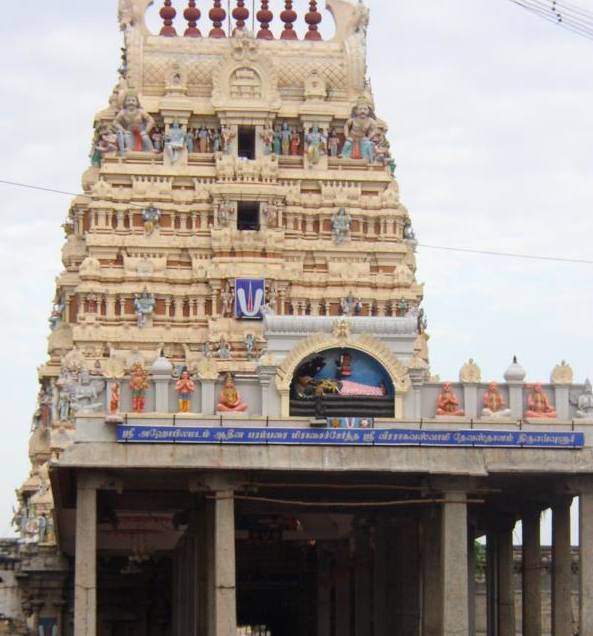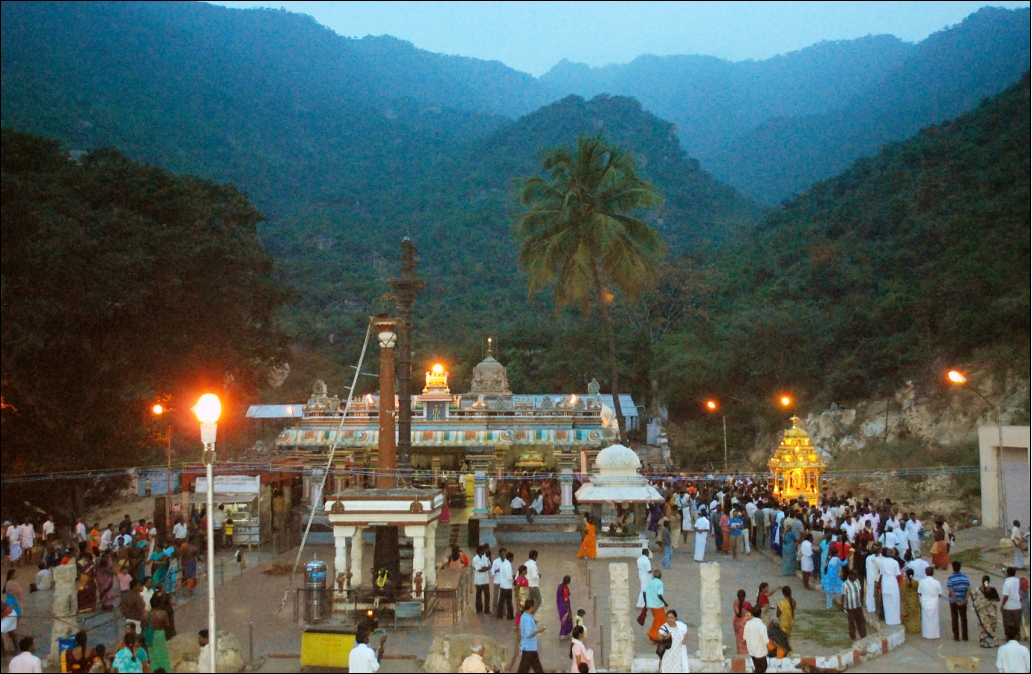Main God:
Arulmigu Subramanyaswamy

Location:
Arulmigu Subramanyaswamy Temple,
Sivanmalai Post, Kangayam 638701
Tirupur District. Tamilnadu
Festivals :
The most important annual festival celebrated in this temple is the Thai Poosa Thiruvizah which lasts 18 days. Starting from Thai Poosam, Subramanya Swamy with his consorts ‘Valli’ and ‘ Deivanai’, are taken around the temple on the Wooden Ther in the Ther Veedhi stretching over 3 kms. This journey lasts 3 days and thousands participate. During such festivities, several sections of people come forward in groups to give annadhanamto the bhakthas who participate in their thousands, irrespective of caste or creed and social status. That all are equal before God is amply demonstrated during such annadhanams.
Kandha Shasti, Soorasamharam, Karthigai Deepam are the other important festivals that are celebrated grandly.

Thangaratham :
This attractive Thanga Ratham ( Golden Charriot) was built in the year 2000 at a cost of Rs 48 lakhs with 7750 gms of gold in a record time of 9 months.
Thanga Ratham “Ula” ( journey) with Lord Murga and his consorts Valli and Deivanai takes place on the hill top around the temple in the evenings after 7 P.M.
A sum of Rs.1,500/- is charged for this “Kattalai”, and on any given day maximum only 5 Kattalais are permitted on a first come first served basis.
As on 15th september 2009, total 2671 “Thanga Ratha Ula Kattalais” have been performed since 10th September 2000.

Worship Timings:
1. Vizha Pooja – 06.00 A.M
2. Kala Shanthi Pooja – 09.00 A.M
3. Uchi Kaala (Afternoon) Pooja – 12.00 P.M
4. Sayaratchai (Evening) Pooja – 06.00 P.M
5. Arthajama Pooja – 08.00 P.M
History:
One of the well known myths associated with Siva is his conquest of Tripuram – the three celestial cities which the Asuras (demons) had taken over, and wreaked havoc over them. The Devas ( celestial gods) appealed to Siva for help and asked him to save them from the demons. Siva made mount Meru his bow, and Vasuki the serpent his bow-string and prepared to wage war against the Asuras. The very tip of Siva’s bow ( Mount Meru) fell on earth and that became Sivamalai according to legend. It is also known as Sakthimalai because Parvathi the goddess did penance once on this hill.
The sage Agastya came to this mountain and performed penance in order to gain knowledge about the Agamas. He also created a natural spring on this mountain from the waters of the Ganga which he brought in his Kamandalam. It is said this miracle took place on Karthigai Pournami day ( full moon in the month of Karthigai) and thus it is venerated by devotees as a special day.
Hanuman too prayed here after being directed to Sivamalai by the sage Vyasa. He was accorded as much power and strength as Vishnu-Narasimha after his penance in Sivamalai. Hanuman, it is believed, even carried flowers from the banks of the Ganga to worship at Sivamalai. Many miracles are said to have taken place in Sivamalai involving celestial beings like Indra whose kingdom was restored to him after a battle with the Asuras. Cursed by Agasthya, king Nakutan became a snake. Sage Dhurvasa asked him to pray to Sivamalai Murugan who restored his original form.

Murugan is said to have gone to Vallimalai on the advice of Narada and married Valli there and brought her to Sivamalai to make it their beloved abode. Like Parvathi in Kancipuram, Valli also did penance in Sivamalai, which included thirty two sacred duties. Later Murugan went to Tiruthani and brought his consort Devayanai also to reside with him in Sivamalai.
Innumerable Tamil Scholars have immortalized Sivamalai with their songs of praise. Sivamalai is featured in the Tiruppugazh, Sivamalai Puranam, Sivamalai Pillai Tamizh, Sivamalai Mayil Vidu Thoothu, Siva Thangaratha Sadakam and Thanipadal.
.jpg)
As early as the Sangam era, Tamil Nadu comprised of the Chola, Chera, Pandya, Kongu and Tondai Nadu. As ancient historians and writers would say in Tamil : “Thooyan Tamil Nadu Aindhu” and “Tamizh mandalam aindhu”, suggesting that there were always five important regions in Tamil Nadu. It also indicates that Kongu and Tondai Nadu were equal in status to the Chola, Chera and Pandya kingdoms. The central region of Tamil Nadu is Kongu nadu. It is flanked by Perumpalai in the north, Pazhani in the south, Velliangiri hill in the west, and Kulithalai in the east.

